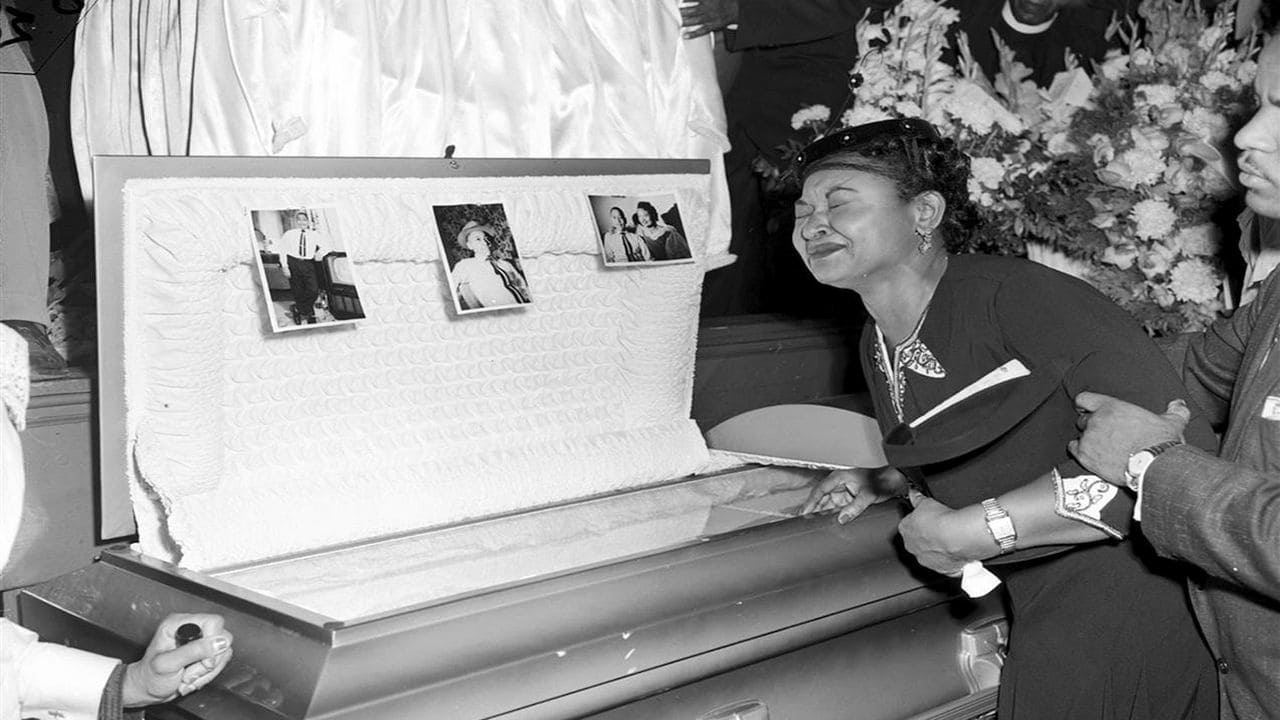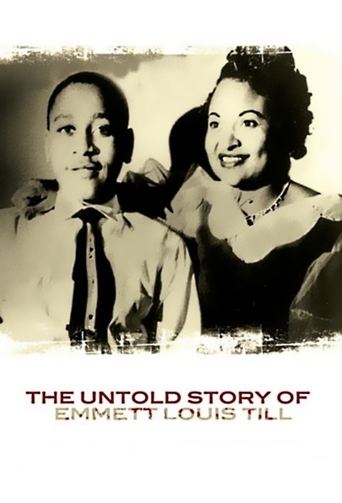



Very well executed
After playing with our expectations, this turns out to be a very different sort of film.
View MoreExcellent characters with emotional depth. My wife, daughter and granddaughter all enjoyed it...and me, too! Very good movie! You won't be disappointed.
View More.Like the great film, it's made with a great deal of visible affection both in front of and behind the camera.
View MoreTo filmteknik (I think that was the commenter's name -- sorry if I got it wrong). In response to your question about the store and the gun, I've read several different accounts of the Emmett Till story on the internet, and not one is exactly the same. There seem to be about 30 different versions of it. They all have the main information correct, but the details are different. I read at least 5 different versions of what happened when Emmett was at the store, so maybe we'll never really know the truth.I noticed that the brutality of the beating has been played down on the internet too. Most say he was beaten and shot, then tied to a fan with barbed wire. The film went into much more detail. It told of the men splitting his head with an axe, cutting off his penis, breaking out all but two of his teeth, gouging his eye, and more.There are also different versions of the number of people involved.The other thing that puzzled me is that one account says that Emmett was killed when he was shot in the head at the river. Yet, the film says he had his head split in two and was also shot in the head. So I don't know what was the actual cause of death.Whatever the correct story is, we do know that he did something harmless and was kidnapped and brutally murdered for it.
View MoreWe remember the generalized imagery of the pre-integration South, but as a person pretty well educated in such matters (or so I like to think) it was still horrifying to be confronted not only by the viciousness of the lynching and murder of Emmett Till but of the Mississippi attitudes that resulted in the acquittal of his killers. Truly, my jaw was open.Some details received short shrift. Perhaps that is because the film was about the emotional impact of the murder, and the political outcome from it. But if Beauchamp wanted to also cover the "whodunnit" details as he suggested, there were some interesting omissions. Gone was any discussion of the forensic evidence, and although a mention was made that a "confession" was published a year later, why did Beauchamp not tell us what it said? It would have also been interesting to know what the assailants (and the accuser, the woman in the store/wife of a killer) had to say, if anything, before they passed away.But setting aside what was "missing," what was there is really worth seeing, even if you think you know the story.
View MoreThe murder of Emmett Louis Till and and subsequent sham of a trial for his murderers were key catalysts for the American civil rights movements. After the brutal lynching, Mamie Till- Mobley put her son in an open casket because she wanted "the world to see what they did to my son." Keith A. Beauchamp's investigative documentary powerfully captures the moment remarkably well, along with posing questions about the continuing lack of justice for Till, and by extension, other victims of racism.Emmett Till was a 14-year-old boy when he went to Mississippi to visit his uncle Moses Wright and cousins in 1955. A trip to the grocery store led to Emmett wolf-whistling at shopkeeper Carolyn Bryant. Emmett's cousins took him quickly away from the scene fearing that Mrs. Bryant was going to get a gun. Her husband Roy and his friend J.W. Milam decided that Emmett's action was not only a crime, but a capital offense. Till was taken by the two, in the company of others unnamed, from Wright's house in the middle of the night of 28 August. At some point during the night, Till was killed. His body was dumped in the Tallahatchie River, bound to a cotton bale with barbed wire. After a few days his grossly mutilated body was recovered and after some difficulty, returned to Chicago where it was view in an open casket by thousands of mourners. The graphic photos of Till mutilated corpse shocked much of the nation as much of white America saw images of crimes they were normally able to ignore.Bryant and Milam were caught and put to trial for murder and kidnapping. Despite the NAACP and black newspapers finding several witnesses for the prosecution an all white, all male jury released them after deliberating for less than one hour. Bryant and Milam then proceeded to confess to author William Bradford Huie in national monthly Look, double jeopardy preventing the confessions from being cause for retrial. All this is recounted in a straightforward manner in the film. The case is not an unfamiliar one for people with any interest in civil rights or the history of the civil rights movement and the film presents only a few new insights into the crime itself. One important and depressing fact uncovered by Beauchamp is the participation of a few African-American youths in the original kidnapping, though not the torturing and killing, of Till. Till's surviving cousins relate and react to the information with a visible distaste of knowing something yet not wanting to accept it.Where the film truly succeeds is in composing an understanding of conditions in the South at the time. Mamie Till-Mobley recounts how friends and family in Chicago helped prep the Till boys on how to behave in the South, kind of a How to Survive Amongst Violent Racists course. Reporter Dan Wakefield, who covered the trial for The Nation recalls his surprise not so much at the crime, but at how the people of the town didn't see what the big deal was. Virtually everybody involved expresses something approaching awe for Moses Wright, who fingered Bryant and Milam in their trial. This at a time when testifying against a white man was as dangerous as it was ineffective. More than the narrative of the crime, it is these and other similar details that give us the most insight into the case and the conditions of African- Americans in the US South.The investigation by Mr. Beauchamp has uncovered more participants and led to the Justice Department reopening the case. 50 years is a long time to wait for prosecution given that most figures involved in the case are long dead. It is however, a testament to how profoundly the legacy of Emmett Louis Till resonates today.
View MoreMost people probably know the story of Emmett Till, the black teen brutally tortured and murdered in 1950's Mississippi for whistling at a white woman. If not and you have the opportunity to see this documentary you by all means should as everyone should know this story. In a nutshell, Till's murder gave impetus to the struggle for equality and thus is an important part of American history over the last half century. (The killers were acquitted but later admitted their guilt in a magazine interview. They have since died. At this writing the Feds have reopened the case to possibly bring others to justice.)However, despite the compelling story from a film standpoint this is only a so-so documentary and it leaves the viewer wondering about a few things.MINOR SPOILERS FOLLOW Some questions raised but not answered: What actually happened when Emmett went into the Bryants' store? Certainly Mrs. Bryant's testimony at trial was BS. But according to this documentary when she emerged from the store and went to the car after Emmett went in to buy bubblegum all the black kids were saying she was going to the car to get a gun kept there. It was at this point that Emmett wolf-whistled at her. If up until this moment nothing offensive had happened why did they all think she was going for her gun? I'm confused by this.The documentary states that after the remains arrived in Chicago they were forbidden to open the box. Forbidden by whom? The film doesn't say. (They opened it anyway.) Another example of sloppy film-making is near the beginning when Emmett is heading to visit the relatives in Mississippi. Mrs. Till (who is very eloquent and well spoken, by the way) describes going to 12th Street Station with Emmett. This is almost certainly a reference to the Illinois Central's Central Station which was located on Chicago's lake front at 12th St. IC was an important rail link between Chicago and the south and Central was their Chicago terminus. Central Station was a very large, rather ugly big city train station with a clock tower and was razed around 1973 or so. The filmmakers illustrate this event by showing what is probably stock footage of some random small town train station. A little research and they could have shown the real thing.
View More